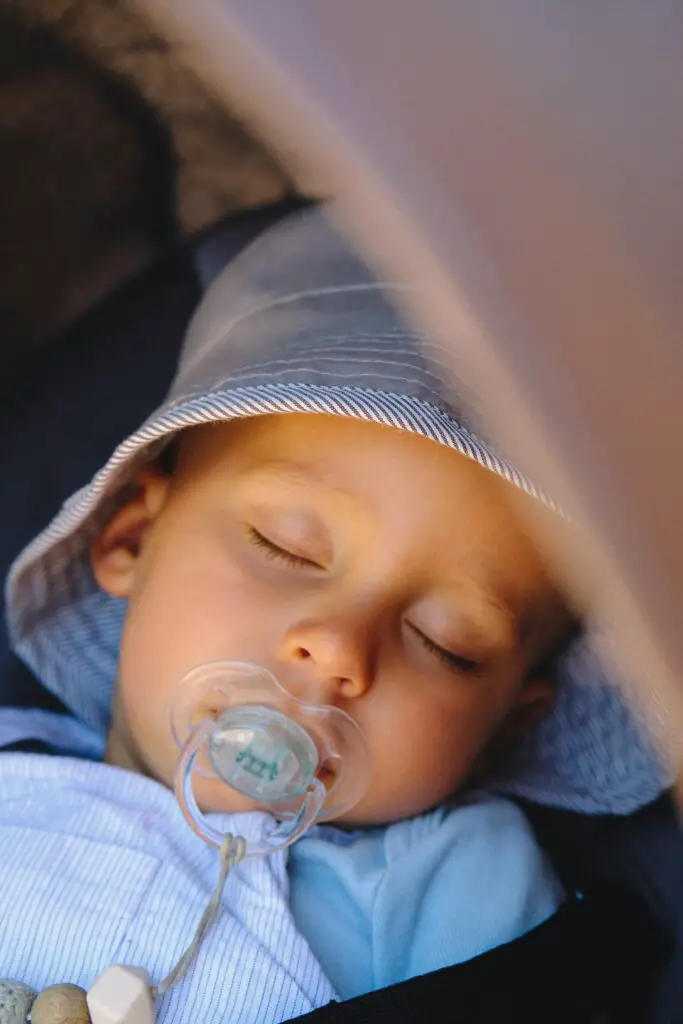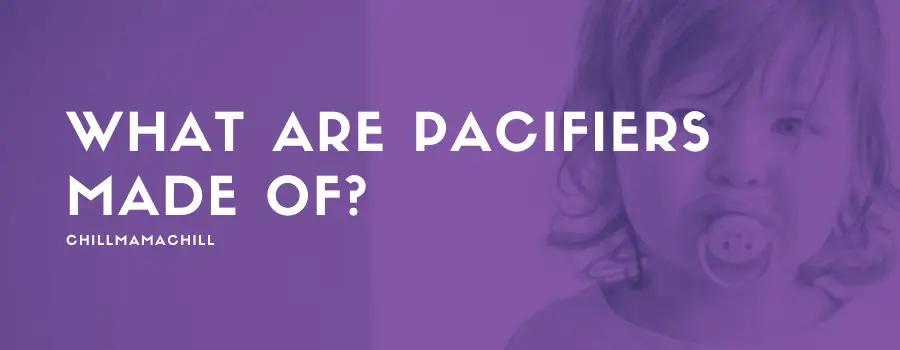It seems like there are more pacifiers than baby clothes in the stores these days. Well, they are a great way to help your baby get back on track with eating and sleeping, but do you know what they’re made of? Some babies find comfort in sucking on their pacifier for hours at a time. The question is: What is it that they’re sucking on, so what are pacifiers made of?
Pacifiers are made of different materials such as latex, silicone, plastic, and rubber. Some of these materials promote health and safety while others do not. As a parent, you need to understand if the pacifier you’re using on your baby is safe and of the right quality. This article addresses everything a pacifier is made of, including materials and design, which promotes safety.
What Constitutes A Pacifier?
A pacifier is a dummy nipple or object specifically designed to be used by infants and children between the ages of two weeks to 24 months. It acts as a safer alternative to the mother’s breast nipple when the child is fussy or restless. It also helps soothe the child with little sucking energy and helps promote muscular strength and coordination.

Pacifiers come in various types, colors and are made from various materials. However, there are only two types of pacifiers: orthodontic and conventional. The difference in these is the shape and design and, of course, material.
Both types of pacifiers generally feature three parts, namely: the nipple, shield, and ring. Doctors mostly recommend orthodontic pacifiers as the most suitable for babies due to their safety-enhanced shape and design. Its flat shape allows for forward tongue thrusting, protecting the child’s palate and overall oral development.
Generally, pacifiers are produced using soft and elastic material that imitates the nipple of a mother’s breast. There have been calls by doctors and safety professionals for manufacturers to develop a single product from a single material to minimize choking risks.
Generally, pacifiers are made from latex, silicone, and rubber. Other companies use plastic resources. Unfortunately, these plastic models require additional softening using chemicals that may be unsafe for children. Such products have since been recalled from the market by the federal government.
Latex
Latex, the most commonly used material to make most pacifiers, is technically described as natural rubber latex and is a raw material of rubber tree Hevea brasiliensis. The tree is usually tapped to extract its milky latex. When scored, the sap is also collected and processed to manufacture thousands of products.
The sap collected for manufacturing pacifiers is usually sourced from latex-free farms in Southeast Asia and South America. Approved chemicals are typically added to the raw latex material to boost its elasticity and strength. However, this raw material contains some natural proteins found to cause allergic reactions in some consumers. Consequently, most manufacturers have opted to eliminate latex and use alternative materials such as silicone in their productions or pretreat the raw latex to suppress the effects of the proteins on consumers.

Additionally, latex cannot survive multiple “boil and cool procedures” to test its ability to maintain the desired shape while offering exceptional performance. This is because latex is naturally more susceptible to disintegrations than other raw materials used in these tests. This had been a significant cause for concern since pacifiers cannot be boiled or washed for sterilization multiple times without disintegrating.
Silicone
In America, silicone is the most widely used raw material to produce pacifiers. It is more expensive than other natural materials, including latex, but it also has superior quality and offers excellent performance. Silicones are products of synthetic polymers that are super strong at high temperatures and oxidation resistance. Therefore silicone can survive the boil and cool testing procedures resulting in high-quality products that can withstand sterilization. Some pacifier manufacturers use certified silicone, which is of extremely high quality.
Is Rubber or Silicone Pacifier Better?
Is a silicone versus rubber pacifier the right choice for your baby? Silicone is made from natural elements like silicon, carbon, and hydrogen. This allows it to be odor resistant as well as easy to clean with soap and water in your dishwasher. However, there’s some concern about the chemicals found within silicone which may cause health problems over time such as allergies
Luckily you can get a safe alternative with natural rubber! These babies have been known not only to last longer but provide better protection against bacteria too because they repel viruses much more effectively than other materials like plastic do.
However, rubber has no odor-resistant properties so if you’re worried about keeping things smelling fresh then this may not work well either way. But, rubber pacifiers are more preferable since they are much softer than silicone.
How are Pacifiers Made
A pacifier’s design is a crucial part of its manufacturer and plays a pivotal role in its usage. The pacifier must have a safe, easy-to-use design that does not pose a choking or safety hazard. For example, pacifiers with detachable parts are extremely dangerous since they can come off and be lodged in the baby’s mouth, increasing the risk of choking. Generally, when designing a pacifier, manufacturers research the construction and configuration of the baby’s mouth, their sucking patterns, the time of the tongue in the sucking process, and how a mother’s nipple feels in the mouth.
They also consult with medical professionals on what should be provided on the baby’s pacifier and apply the recommendations in their design process. Regardless of the design used, each must comply with the United States Consumer Product Safety Commission’s Requirements for Pacifiers.
Byproducts
When developing silicone pacifiers, there are hardly ever any byproducts since the materials tend to be expensive, forcing manufacturers to reuse all byproducts. Silicone contains a mold system with several cavities. During production, the melt is transferred to each cavity with the aid of long channels called runners.
These runners often contain polymers, also called flash. When cooked and solidified, the runners are removed, regrouped, and made into new pellets ready for repeated boiling and melting. When channel molds are hot, the runners are again heated and transferred automatically into the system. And while the hot channels eliminate e automatically, a superior quality mold system is retained, which is very expensive.

I’m Cathrine and I’m a 39-year-old mother of 3 from Utica, New York. And I’m extremely happy you’ve come to visit my hide-out on the web. Here I post about everything related to family-life and usually it will involve babies and lessons I’ve learned over the years from experts, friends, and my own mistakes. So hopefully you will find what i write fun and informational!

